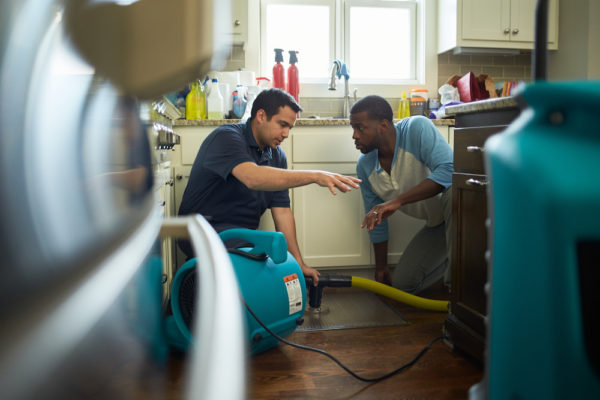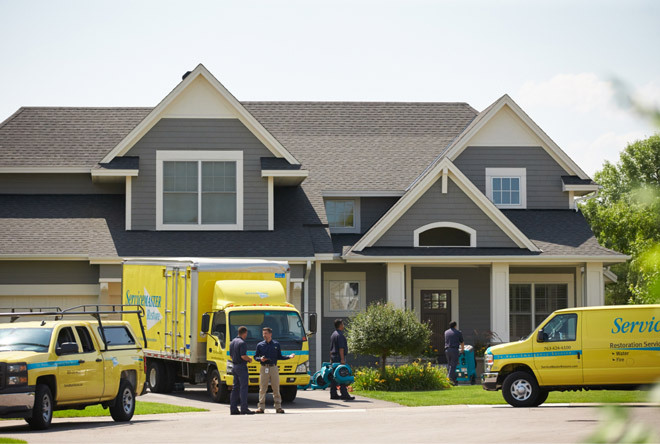Emergency Water Damage Cleanup in Barnegat Light, NJ
 During a water damage disaster, the water usually flows along the easiest
route, down into the subfloor and through to the level below, or soaked
into porous building materials, such as wood or sheetrock. When wet, these
materials can become warped, discolored, or otherwise break down, and
the damage worsens with time. With a smaller water disaster, the water
may be able to dry on its own through evaporation, but this occurs slowly
and often results in greater damage than would occur with proper treatment.
During a water damage disaster, the water usually flows along the easiest
route, down into the subfloor and through to the level below, or soaked
into porous building materials, such as wood or sheetrock. When wet, these
materials can become warped, discolored, or otherwise break down, and
the damage worsens with time. With a smaller water disaster, the water
may be able to dry on its own through evaporation, but this occurs slowly
and often results in greater damage than would occur with proper treatment.
ServiceMaster of the Shore Area is your local Barnegat Light, NJ source for all your water damage restoration and disaster cleanup needs. We are licensed, bonded, and ensured, and a trusted member of our community. Our technicians are not only certified in water damage mitigation, disaster restoration, and mold remediation, but they also have years of experience and are constantly keeping up with the latest techniques and technology in the industry.
Every water damage restoration is unique, but the following information provides an overview of how we typically proceed. Your technicians will walk you through the specifics for your unique restoration.
Understanding The Drying Process
It is our goal to restore your property as quickly and efficiently as possible. The drying and restoration may require up to three phases before completion.
PHASE 1: Emergency Service
Upon arrival to a water damage, a Statement of Authorization will need to be signed before work can begin. A ServiceMaster Clean trained technician will begin by determining if your carpet is salvageable and if the carpet can be dried in place. If so, we will extract as much water as possible. High-velocity air movers and dehumidifiers will be set to dry the carpet and sub-floor quickly. Equipment must be left on for the designated amount of time to ensure proper drying. The carpet may need to be treated to inhibit microbial growth. If the pad cannot be dried in place, we will detach the carpet from the tack strip and remove the wet padding to expedite the drying process. A pad sample will be taken back to our office to be matched and ordered for the reinstallation. If your carpet is deemed unsalvageable, the technician may advise removing both the pad and carpet.
Job Site Inspections
It will be necessary for us to have access to your property during business hours throughout the drying process in order to properly monitor the temperature, humidity and our equipment. Please work with our office on your preferred method for re-entry to your property so we can properly monitor the drying process.
PHASE 2: Reinstallation/Cleaning
When carpet can be successfully restored, we may need to install new pad and reinstall the carpet. Reinstallation includes restretching, reattaching the tack strip, seam repair and threshold repair and /or replacement. After the reinstallation, carpet is cleaned and deodorized. When the carpet and pad can be successfully restored through in-place drying, the carpet will still need to be cleaned and deodorized. During this phase, any upholstery or other damaged furnishings will be cleaned. If equipment is still present, the technician will remove it at this time.
PHASE 3: Structural Repairs
If applicable, after the drying process is complete, structural damage is assessed and the repair phase can begin. At this time, drywall, ceilings and floors will be repaired. If carpet cannot be salvaged, new carpet and pad will be installed. It may be appropriate to complete structural repairs before reinstallation and cleaning.


